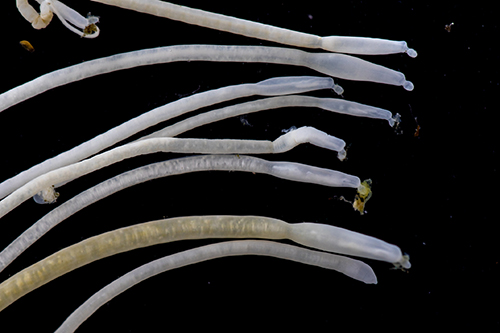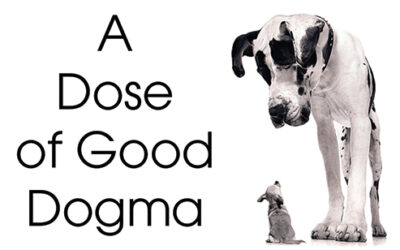By Debbie Black
Hopefully I have your attention — particularly if you own a dog like Chase, our golden retriever who loves eating sand crabs.
Chase has spent a good portion of her three years on the beach. How not? She’s a golden and we live in Cayucos! Besides being waterdogs, goldens love to eat stuff, and by “stuff,” I mean anything that looks even remotely edible, even if it isn’t.

For her, the only thing better than chasing a tennis ball on the beach is darting about, eating sand crabs. My husband and I actively discourage this, having heard that the crustaceans may be mildly toxic. But she still manages to scarf several crabs on each beach walk. That never seemed to be a problem—until Wednesday, April 28.
A few weeks prior, we noticed she’d lost some weight, but she’s an active young dog, and in all aspects quite healthy. That night, however, she was restless, panting. The next morning, she lost her breakfast and continued to throw up throughout the day. By Friday morning, we knew this wasn’t simply a case of upset stomach. She was listless, wouldn’t eat, couldn’t keep broth down, and seemed disoriented.
We drove our very sick Chase to Atascadero Emergency Pet Hospital. They took her right in, did an ultrasound and found an abscess on her intestines, which Dr. Aaron Schechter said was extremely unusual. Within an hour, he was operating. He found that the abscess had ruptured, causing peritonitis. Chase was so sick; she would have died within a few hours.
Dr. Schechter removed the abscessed section of her intestines, flushed out her abdomen and started antibiotics. Around the abscess, he and Dr. Cody Brooks discovered something else. Chase was teeming with strange worms like they’d never seen before.

The doctors sent photos of the worms to their veterinarian colleagues. This effort, along with the lab’s parasitology report, identified the nasty little buggers as Profilicollis altmani (thorny-headed worms)—not the typical worms found in dogs.
Dr. Brooks rolled up his sleeves and got to work trying to figure out what Chase could have gotten into. After researching numerous papers and consulting with the veterinarian at Monterey Bay Aquarium (who specializes in these worms in otters), Dr. Brooks confirmed that Chase likely got infected from eating sand crabs.
I want to stress that this is a rare incident. The veterinarians don’t know why Chase happened to be affected. Lots of dogs eat sand crabs (and worse) on the beach and don’t seem to have problems. Dr. Brooks said maybe she ate just one too many and passed some threshold of infection, whereas most dogs are not affected.
Thorny-headed worms are found in 90% of the sand crabs on our beaches. They require two hosts to complete their life cycle. The intended definitive hosts are shore birds — in particular, the surf scoters. The intended intermediate hosts are our ubiquitous sand crabs, called Pacific Mole Crab (Emerita analoga).
Birds eat the crabs; get infected with worm larvae that develop into adults and reproduce. Eggs are expelled in bird feces into ocean. Sand crabs (filter feeders) ingest eggs, which develops into larvae that wait until crabs are eaten by birds. Cycle repeats. Things go haywire when an accidental host (otter or Chase) eat the crabs. When shore birds and sea otters eat lots of crabs per day, the ingested worms can perforate the intestines, cause peritonitis and kill them as it would have killed Chase.
Bottom line: Please don’t let your beach dog eat more than an occasional crab. It appears a few won’t hurt. Chase ate about 25 crabs each week, even as we tried to stop her. If your dog loses weight, or repeatedly loses her breakfast, please ask your veterinarian to consult with Dr. Brooks to discuss the possibility of a thorny-headed worm infection.
So, now what do we do with our sand crab scarfer? We’ll be aware of sand crab “high season” that runs spring through fall. On our early morning or evening walks (when crabs are most active) we’ll avoid high/low tide lines at the edges of what’s called the “swash zone,” and keep her on a leash. From late November through March, there should be fewer crabs, so we’ll chance letting her off-leash. As a last resort, we’ll find a comfortable box muzzle for her. After all, she’s a golden — she’s got to play on the beach!
Chase may have found some “serpents” in Paradise, but there are always work-arounds. We’ll figure out a way to live alongside the beach creatures who also call Estero Bay home.
Debbie Black is a member of The BookShelf Writers. To see more of her work, visit www.thebookshelfwriters.com



